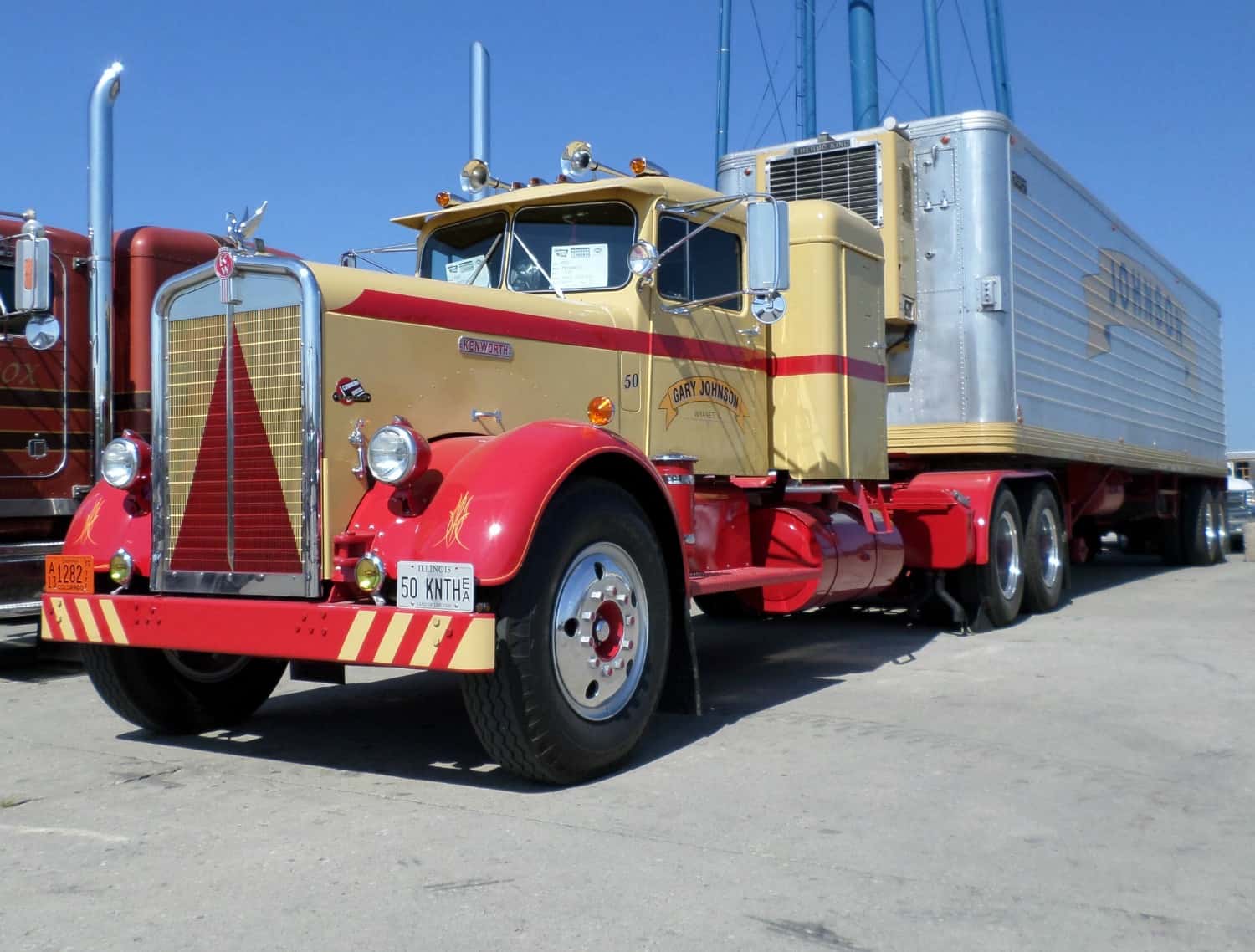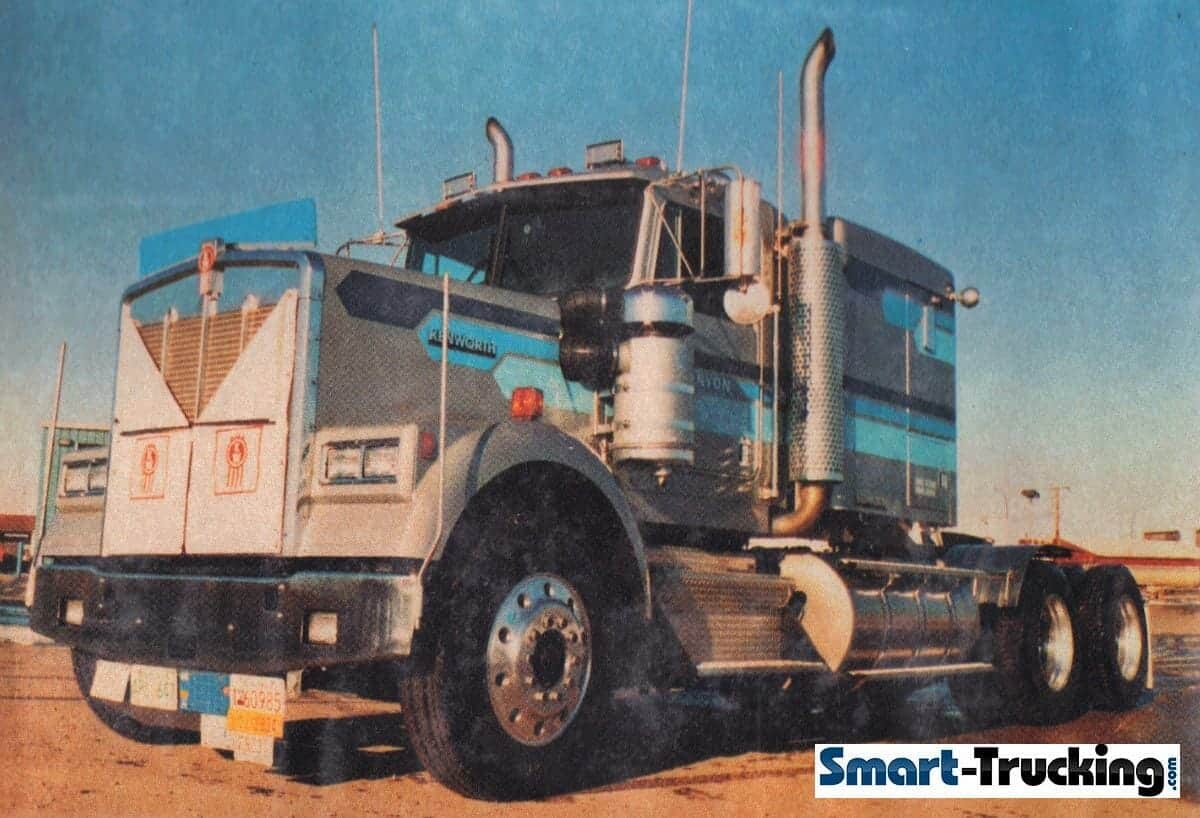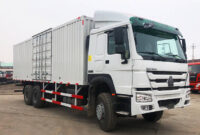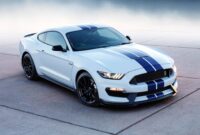Older Kenworth Trucks For Sale: A Comprehensive Guide to Timeless Workhorses pickup.truckstrend.com
For decades, Kenworth trucks have stood as a testament to American engineering, embodying robustness, reliability, and a distinctive aesthetic that commands respect on the open road. While the allure of brand-new, high-tech rigs is undeniable, a significant and passionate segment of the trucking community continues to seek out and invest in older Kenworth models. These venerable workhorses, often steeped in history and character, offer a unique blend of proven performance, classic style, and a more accessible entry point into the world of heavy-duty hauling.
This comprehensive guide delves into the fascinating world of older Kenworth trucks for sale, exploring why they remain a popular choice, what to look for when buying, the process of acquiring one, and tips for ensuring these classic machines continue to serve reliably for years to come.
Older Kenworth Trucks For Sale: A Comprehensive Guide to Timeless Workhorses
Why Choose an Older Kenworth? The Enduring Legacy
The decision to purchase an older Kenworth is often driven by a combination of practical considerations and an appreciation for the brand’s legendary heritage. Unlike their modern counterparts, which are laden with complex electronics and advanced emission systems, many older Kenworths boast a simpler, more mechanically focused design that appeals to many owner-operators and small fleet owners.
- Unmatched Durability and Build Quality: Kenworth trucks earned their "Built to Last" reputation for a reason. Older models were constructed with heavy-duty components and robust frames designed to withstand millions of miles of arduous work. This inherent durability means that even well-used trucks can often be resurrected and continue to perform admirably.
- Mechanical Simplicity: Pre-emission and early emission-era trucks often feature less complex electronic control units (ECUs) and more straightforward mechanical systems. This translates to easier diagnosis and repair, often allowing skilled mechanics (or even the owner) to perform maintenance without specialized diagnostic tools, potentially reducing labor costs.
- Cost-Effectiveness: The most obvious benefit is the lower initial purchase price. For individuals or businesses operating on tighter budgets, an older Kenworth can provide a capable, reliable truck at a fraction of the cost of a new one. This also typically means lower insurance premiums and less depreciation.
- Classic Appeal and Resale Value: Many older Kenworths, particularly the iconic W900s, have achieved classic status. Their timeless design, long hoods, and chrome accents resonate deeply with trucking enthusiasts. A well-maintained or restored older Kenworth can hold its value surprisingly well, sometimes even appreciating, making it not just a tool but also an investment.
- Proven Track Record: Countless stories abound of older Kenworths clocking over a million miles and still running strong. Their longevity is a testament to their design and the care of their owners, offering peace of mind to prospective buyers.

Key Models and Series to Look For
Kenworth has produced a wide array of models over the years, each designed for specific purposes. When exploring older Kenworths for sale, certain series consistently stand out:
- The W900 Series (W900A, W900B, W900L): The undisputed king of classic Kenworths. Known for its iconic long hood, classic styling, and spacious cab, the W900 is a favorite among owner-operators and show truck enthusiasts. The "A" models are the oldest, followed by the "B" and the extended "L" models. They are highly customizable and often sought after for their raw, powerful aesthetic.
- The T600/T800 Series: These trucks introduced more aerodynamic designs, offering better fuel efficiency than the W900 while retaining Kenworth’s legendary durability. The T600 was Kenworth’s first "aerodynamic" truck, while the T800 is a versatile vocational truck, popular for heavy haul, dump, and logging applications due to its robust frame and superior maneuverability.
- The K100 Cabover: While less common today, the K100 cabover was a staple of American highways for decades. Its compact design allowed for a shorter overall length, beneficial in states with strict length laws, and offered excellent visibility. These are now sought by collectors and those who appreciate their unique, forward-control design.
- Niche Models (e.g., C500): For specialized heavy-haul or off-road applications, models like the C500 (often seen in oil fields or extreme heavy-haul) offer unparalleled ruggedness and massive power capabilities. These are highly specialized and typically command higher prices due to their unique capabilities.

What to Look For When Buying – A Comprehensive Inspection Guide

Purchasing an older truck requires diligence. A thorough inspection is paramount to avoid costly surprises down the road.
-
Engine & Drivetrain:
- Engine Type: Identify the engine (Cummins N14, Cat 3406, Detroit Diesel Series 60 are common and highly regarded). Research its known issues and typical lifespan.
- Mileage/Hours: High mileage is expected, but look for evidence of proper maintenance.
- Leaks & Smoke: Check for oil, coolant, or fuel leaks. Start the engine cold and look for excessive white, black, or blue smoke from the exhaust.
- Engine Sound: Listen for knocking, ticking, or unusual noises.
- Transmission: Check for smooth shifting (manual) or proper engagement (automatic). Inspect for leaks.
- Differentials: Check fluid levels, look for leaks, and listen for grinding or whining noises during a test drive.
- Maintenance Records: The holy grail. Detailed service history can reveal much about the truck’s past care.
-
Frame & Chassis:
- Rust: Pay close attention to the frame rails, crossmembers, suspension components, and cab mounts. Surface rust is common, but deep, structural rust is a red flag.
- Cracks & Bends: Inspect the frame for any signs of cracks, especially near stress points like suspension mounts or fifth wheel.
- Suspension: Check air springs (if air ride), leaf springs, bushings, shocks, and kingpins for wear or damage.
- Fifth Wheel: Inspect for cracks, excessive wear, and proper lubrication.
-
Cab & Interior:
- Rust: Check cab corners, door bottoms, and floorboards for rust.
- Wear and Tear: Seats, dashboard, gauges, and controls. Ensure all gauges work.
- HVAC: Test the heater and air conditioning.
- Sleeper: If applicable, inspect the mattress, insulation, and any auxiliary power units (APUs).
-
Tires & Brakes:
- Tires: Check tread depth, uneven wear patterns (indicating alignment issues), and sidewall condition. Note the age of the tires.
- Brakes: Inspect brake drums/rotors, pads/shoes, airlines, and air tanks for leaks. Ensure the air compressor builds pressure quickly.
-
Electrical System:
- Lights: Test all exterior and interior lights.
- Wiring: Look for frayed, exposed, or patched wiring.
- Battery: Check the battery terminals for corrosion and ensure batteries hold a charge.
-
Documentation:
- Ensure it’s clear and transferable.
- DOT Inspection History: If available, review past inspection reports.
- Emissions Compliance: Crucial for older trucks. Understand local and state emissions regulations. Some older trucks may not be eligible for registration in certain areas without costly modifications.
Professional Inspection: Always, always, always invest in a pre-purchase inspection by a qualified, independent heavy-duty mechanic. They can identify issues that an untrained eye might miss.
The Buying Process and Where to Find Them
Finding the right older Kenworth involves knowing where to look and how to negotiate.
-
Online Marketplaces:
- TruckPaper.com & CommercialTruckTrader.com: These are leading online classifieds for commercial vehicles. You can filter by make, model, year, and price.
- eBay Motors & Facebook Marketplace: Good for private sellers and finding unique or project trucks. Be cautious and verify details thoroughly.
- Dedicated Forums/Groups: Online trucking forums and Facebook groups often have "for sale" sections where enthusiasts list their trucks.
-
Dealerships & Auctions:
- Used Truck Dealerships: Reputable dealers often have a selection of older trucks. They may offer some level of warranty or have performed basic inspections.
- Commercial Vehicle Auctions: Can be a source of good deals, but it’s often "buyer beware." Inspect thoroughly before bidding, as sales are typically "as-is."
-
Private Sellers: Buying directly from an owner can sometimes yield a better price and more detailed history, but it requires more due diligence on your part.
Negotiation Tips:
- Be prepared with your research (average prices for similar models, common issues).
- Highlight any identified flaws or necessary repairs to justify a lower offer.
- Don’t be afraid to walk away if the price isn’t right or if the seller isn’t transparent.
Financing & Insurance:
Financing older trucks can be more challenging than new ones. Lenders may require larger down payments or offer higher interest rates due to perceived higher risk. Shop around for specialized commercial vehicle lenders. Insurance premiums can also vary based on the truck’s age, value, and intended use.
Owning an Older Kenworth – Tips for Longevity and Performance
Once you’ve acquired your older Kenworth, proper care and maintenance are crucial to maximizing its lifespan and performance.
- Maintenance is Key: Stick to a rigorous maintenance schedule. Regular oil changes, lubrication (greasing), fluid checks, and filter replacements are non-negotiable. Address minor issues promptly before they escalate.
- Parts Availability: While many parts for common engines (Cummins N14, Cat 3406, Detroit Series 60) are readily available, some specific body or trim pieces for very old or rare Kenworth models might be harder to source. Online forums, specialized salvage yards, and classic truck parts suppliers can be invaluable resources.
- Customization & Restoration: Older Kenworths are popular candidates for customization and full restorations. Many owners enjoy upgrading interiors, adding chrome, or performing engine rebuilds to restore their truck to its former glory or enhance its performance.
- Emissions Regulations: This is arguably the biggest challenge for older trucks. Be acutely aware of federal, state, and local emissions laws. Some older models may be grandfathered in, while others might require costly retrofits (e.g., DPF installation) or be restricted from operating in certain areas. This is a critical point to research before purchase.
- Fuel Efficiency: Generally, older trucks will not match the fuel efficiency of modern, aerodynamic rigs with advanced powertrains. Factor higher fuel costs into your operating budget.
- Lack of Modern Safety Features: Older Kenworths lack modern safety features like stability control, collision mitigation systems, and advanced driver-assistance technologies. Drivers must rely more heavily on their skills and vigilance.
Price Table: Estimated Price Ranges for Older Kenworth Trucks
Please note: These prices are highly variable and depend heavily on the truck’s exact year, mileage, engine, transmission, overall condition (mechanical and cosmetic), maintenance history, and geographic location. This table serves as a general guide.
| Model Series | Typical Year Range | Condition Category | Estimated Price Range (USD) | Key Factors Affecting Price |
|---|---|---|---|---|
| Kenworth W900 | 1980s – early 2000s | Fair (Project/Work) | $15,000 – $35,000 | High mileage, cosmetic flaws, minor mechanical issues. |
| Good (Solid Runner) | $35,000 – $70,000 | Well-maintained, decent cosmetics, reliable engine/drivetrain. | ||
| Excellent/Restored | $70,000 – $150,000+ | Low mileage for age, recent overhaul, pristine condition, custom builds. | ||
| Kenworth T600/T800 | 1990s – early 2000s | Fair (Project/Work) | $10,000 – $25,000 | High mileage, some body damage, potential repairs needed. |
| Good (Solid Runner) | $25,000 – $50,000 | Regularly serviced, functional, ready for work. | ||
| Excellent/Well-Maintained | $50,000 – $80,000 | Very clean, detailed service history, well-preserved. | ||
| Kenworth K100 Cabover | 1970s – 1990s | Fair (Project/Work) | $10,000 – $30,000 | Significant rust, non-running, incomplete. |
| Good (Runner/Restorable) | $30,000 – $60,000 | Drives, minor issues, good base for restoration. | ||
| Excellent/Restored | $60,000 – $120,000+ | Show quality, full restoration, rare or unique configurations. | ||
| Kenworth C500 | 1990s – early 2000s | Good (Work Ready) | $50,000 – $150,000+ | Specialized heavy-haul, higher initial cost, unique features, condition is paramount for heavy work. |
Frequently Asked Questions (FAQ)
Q1: Are older Kenworths reliable?
A1: Yes, many older Kenworths are incredibly reliable, largely due to their robust construction and simpler mechanical systems. However, reliability depends heavily on the truck’s maintenance history and how well it has been cared for by previous owners. A thorough pre-purchase inspection is crucial.
Q2: What’s the best engine for an older Kenworth?
A2: Popular and highly regarded engines include the Cummins N14, Caterpillar 3406 (especially the E-model), and Detroit Diesel Series 60. These engines are known for their durability, power, and relative ease of maintenance, with good parts availability.
Q3: How much does it cost to maintain an older Kenworth?
A3: Maintenance costs can vary. While routine maintenance (oil changes, filters, greasing) might be similar to newer trucks, older trucks may require more frequent repairs due to wear and tear. Parts for common engines are generally affordable and available. However, unexpected major repairs (engine overhaul, transmission rebuild) can be costly. Budget for potential repairs beyond routine maintenance.
Q4: Can I get financing for an older truck?
A4: Yes, but it can be more challenging than financing a new truck. Lenders specializing in commercial vehicle financing may offer loans, but they often require larger down payments and may have higher interest rates due to the perceived higher risk of older assets. The truck’s condition and your creditworthiness will be key factors.
Q5: What about emissions regulations for older Kenworths?
A5: This is a critical consideration. Emissions regulations vary by state and even by county. Trucks built before certain years (e.g., pre-2000 or pre-2007) may be exempt from certain requirements, while others might need costly Diesel Particulate Filter (DPF) retrofits or be restricted from operating in specific zones (e.g., California’s CARB regulations). Always research the specific regulations for your intended operating area before purchasing.
Q6: Is it worth restoring an older Kenworth?
A6: For many, yes. Restoring an older Kenworth can be a rewarding project, especially for iconic models like the W900. While it can be a significant financial investment, a properly restored truck can be a source of pride, hold its value well, and even appreciate, especially if it’s a rare or historically significant model. For owner-operators, a restored truck can offer a unique identity on the road.
Conclusion
The market for older Kenworth trucks for sale represents a vibrant intersection of practicality, passion, and heritage. For those willing to invest the time in research and inspection, an older Kenworth can be a remarkably cost-effective and rewarding asset, offering the legendary durability and timeless style that has defined the brand for generations. Whether you’re seeking a rugged workhorse, a blank canvas for customization, or a piece of trucking history, the enduring legacy of Kenworth ensures there’s an older rig out there ready to rumble down the highway for many miles to come. They may not have the latest bells and whistles, but what they offer in return – character, reliability, and an undeniable presence – is truly priceless.



